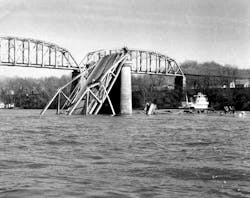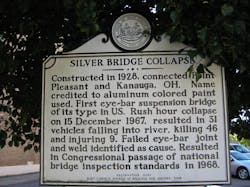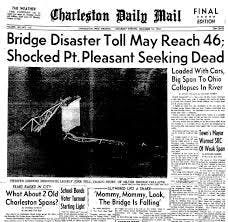Amid the celebrations of the holiday season, citizens of Mason County, WV, are pausing on Dec. 15 to recall the 50th anniversary of the bridge collapse that changed everything.
On Dec. 15, 1967, the 1460-foot suspended portion of the Silver Bridge collapsed. More than 30 vehicles plunged into the water and 46 people died as a result.
The bridge connects Ohio and West Virginia over the Ohio River. A historical photo gallery of the collapse is maintained by The Herald-Dispatch of Huntington, WV.
The event is so important locally that schools in Mason Country will be canceled so students and their families can attend.
Among the scheduled speakers are Brandye Hendrickson, acting administrator for the Federal Highway Administration (FHWA).
“The Silver Bridge collapse was a national wake-up call and inspired a much more aggressive effort to inspect and maintain bridges across the country. In fact, this tragedy propelled the nation into a new era of bridge safety,” Hendrickson said in a statement.
She is referring to National Bridge Inspection Program, which was fully implemented in 1971. FHWA attributes the Sliver Bridge collapse for ushering in “a new era of bridge safety,” helping to set federal standards and requiring mandatory inspections every two years of the nation’s bridges.
Tom Smith, the secretary for the West Virginia Department of Transportation, said the goal of the remembrance ceremony is to “recognize and acknowledge the program that came as a result, saving thousands of lives across the nation.”
Unfortunately, this incident did not eliminate bridge collapses. One fell from fire in Atlanta earlier this year and there was also the deadly I-35W bridge collapse in Minnesota in 2007.
As West Virginia remembers the victims of that 1967 collapse, it can also serve as a reminder of the dire need for more infrastructure funding to avoid future tragedies.
About the Author
Neil Abt
Neil Abt is a former FleetOwner editor who wrote for the publication from 2017 to 2020. He was editorial director from 2018 to 2020.


